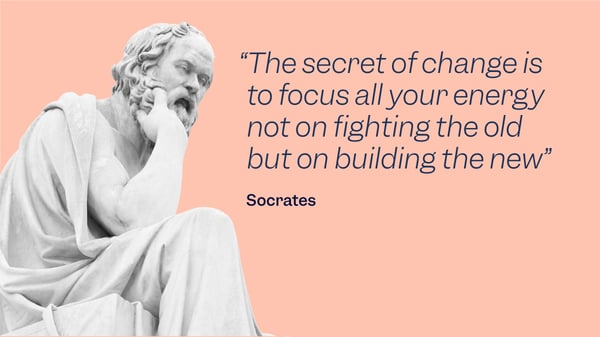
Old habits die hard and a paper-based QMS system is that old habit that has more disadvantages than advantages. Whereas the new eQMS system holds the seeds for success in future regulatory audits. That is why the bad old habit of using a paper-based QMS system should be replaced by a new good habit of using an eQMS system.
"You cannot change your future, but you can change your habits and surely your habits will change your future"
Dr. APJ Kalam
In this article, I will share my experiences of how an eQMS system holds tremendous benefits for the life science industry.
01. GxP Compliance
First and foremost, when FDA worked through its GxP compliance requirements it knew that the GxP requirements of documentation are going to be burdensome at some point when the manufacturers will have to archive them physically and keep trained manpower for the storage, maintenance, and retrieval of the documents. Also, every document needs to go through many pairs of eyes which will call for physical movement of documents across huge manufacturing facilities and sometimes even across the manufacturing sites. This can cause delays in the manufacturing process. As a consequence, the ultimate sufferer could be a patient who needs the medicine.
That is why FDA itself has come up with 21 CFR Part 11 to help the life science industry to implement a computerized QMS system along with electronic signatures for easier GxP compliance.
02. Go Lean
Is your organization running a ‘Go Lean’ campaign to eliminate the waste? Then you must consider the advantages of shifting to an eQMS because it is going to help you reduce four types of Muda wastes as below:
- Inventory: The biggest advantage of a paperless system is savings on the physical storage place.
- Motion: The paperless system does not need a physical movement of documents from one place to the other. Not just this, it also saves on the motion that the employees are required to create. For example, a photocopy or a scanned copy of the document. Well, if this is not enough, then note that the employees also don’t have to send emails about CAPAs, Events (Deviations and Nonconformances), and Change Controls to each other.
- Waiting: As everything is always available on the cloud, the approver does not need to wait for the reviewer to pass the documents physically to him/her. Multiple pairs of eyes can go through the same documents at once. This can easily happen over a phone call, the author can make live edits based on comments of the reviewer and the approver. And then everybody just has to e-sign the document as their turn arrives. A lot of time saved right?
- Transportation: No motion, no transportation. It is really as simple as that!
03. Go global
We know that this is not something that healthcare companies have to do additionally because most of the healthcare companies are already global. Especially to optimize the manufacturing and transportation costs. But the lacuna that these global organizations have is that they have local QMS systems. This simply means that they have local Quality Assurance teams too. Multiple Quality Assurance teams mean more manpower, more manpower means more expenditure. Now we agree that certain operations such as laboratory experimentation or actual manufacturing in the life science industry can not be performed on the cloud but reviewing, approving, and signing the documents electronically can certainly be performed on the cloud. Now every global organization can have a single centralized eQMS system, thanks to 21 CFR Part 11!
04. Train better
The training process involves multiple repetitive steps which include Retraining and Role wise Training assignments. An eQMS automates these repetitive steps to ease the life of the training supervisors.
- Retraining: an eQMS sends automatic training reminders as the retraining date arrives. Not only this, but users also get training reminders every time a training document is revised.
- Role-wise Training Assignment: You can assign a bunch of training tasks to the users belonging to a specific job role. Every time a new user joins, all that you have to do is define the user role in the organization and the relevant training will automatically get assigned to the user. The same applies when an existing user steps into a new role or takes up an additional role.
Moreover reviewing the training status is way easier with an eQMS solution. The training supervisor gets the birds-eye view on who has gone through the training materials and who is yet to begin. This allows him/her to take individual follow-ups with the employees who need to complete the training.
05. E-signatures
Have you become weary of using the specific brand of the pen with a specific ink color or maybe even the shade? Then now is the time to embrace the comfort of e-signatures. The e-signatures get automatically time-stamped. Saving you a lot of hassle of recalling the date when you are signing. Moreover, you can sign from anywhere in the world. By anywhere we mean literally anywhere including the comfort station.

06. Audit Trail
The GxP requires every change in the document to be signed with a mention of the date. It is quite easy to strike through mistakes in grammar or spelling and then put a date but what do you do when you write the date in the wrong format? Strikethrough the date and put another sign and date there? Quite a lot of pressure isn’t it? So if you feel pressured when you have to write the date and time on paper-based QMS documents in the SOP-defined format that your organization has decided, then eQMS is your only savior.
07. Templatize it
We know that spending a lot of time on the documents is the last thing any Scientist or a Process Engineer would want. That is primarily because the Scientist or the Process Engineer would want to spend most of their time experimenting or manufacturing the products. The core strength of a Scientist or a Process Engineer is the ability to think scientifically and logically but certainly not formatting the documents. Scilife's eQMS allows the scientists to spend more time on reasoning in the write-ups than formatting the documents. This is because the Scilife Platform has a very user-friendly feature for creating document types that can be customized for different types of documents including but not limited to Standard Operating Procedures, Work Instructions, Templates, Internal Audit Reports, Batch Manufacturing Records, Process Development Report and the list goes on...
08. Document versioning
Does your organization have an SOP on how to version the documents correctly? Well, if you have an eQMS solution for document management, then you simply need not worry about it. That is because the documents get autoversioned every time you save them.
09. New norm
The year 2020 has taught us many new lessons for mankind. It seems that pandemic is going to be here for some time and is going to change some of our habits permanently, even after it is gone. Working remotely is going to be the new norm. As people have started to notice the benefits that come with avoiding unnecessary commutes. It may happen that going forward the audits will continue to happen remotely. Our Scilife's Audits module helps you to adapt to this new norm seamlessly. The module can be used to schedule, document, and report audit findings on the cloud!
10. Love thy nature
If all these advantages are not enough then the last but not the least fact which one should think about is the environment-friendliness of the eQMS system. No paper means no cutting of trees, no trash, and no recycling. You can ‘Love thy Nature’ in reality.
Conclusion
Therefore to change the Life Science industry for the better of mankind every organization should focus on building an eQMS.
We are eager to show you how the Scilife smart QMS can help you grow faster, save money, and improve employee productivity.





